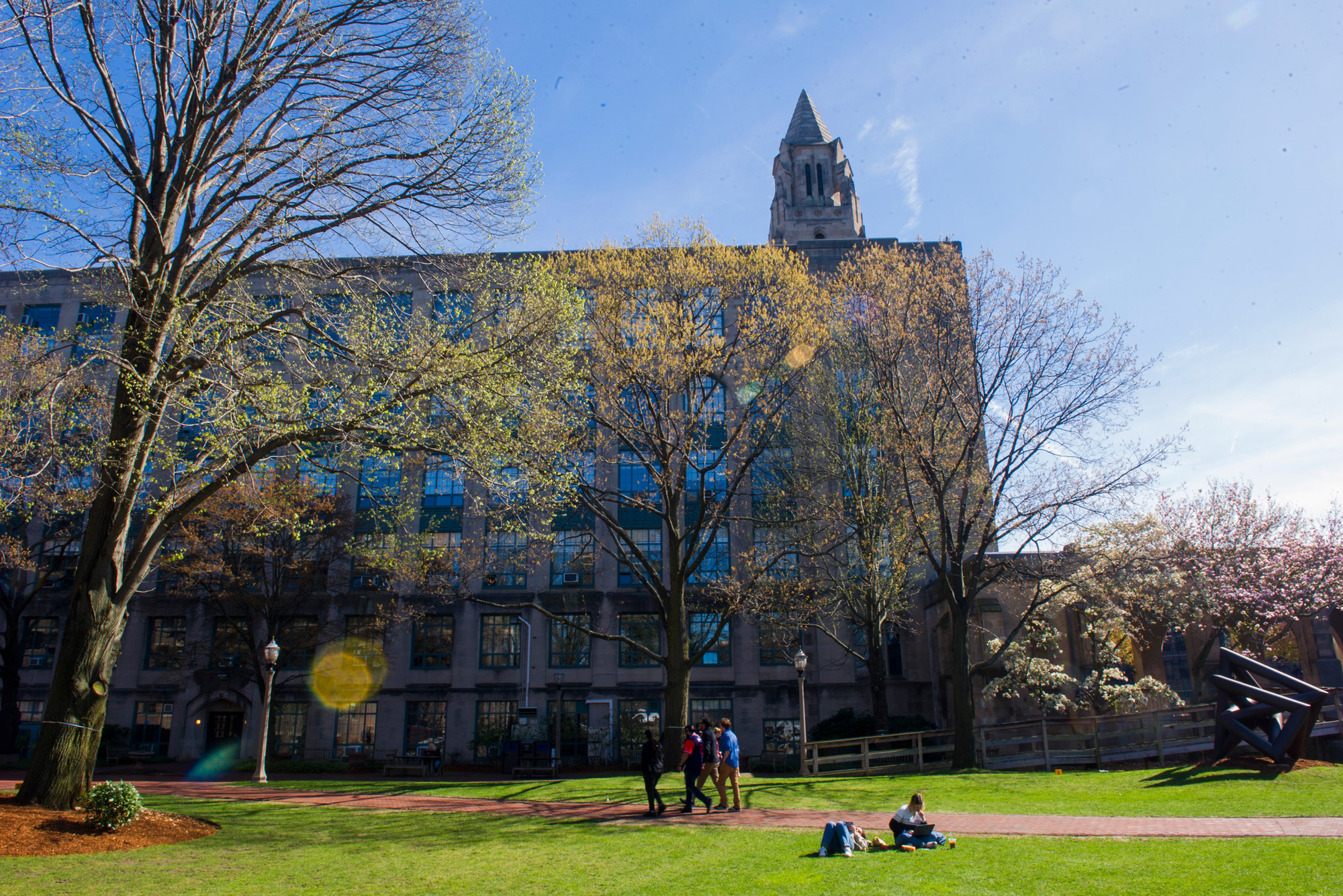University Will Distribute $11.5 Million in Pandemic Aid to Students in Need

As spring approaches, many BU students will receive a technology subsidy of up to $1,400 from federal COVID aid. Photo by Adele Bertschy
University Will Distribute $11.5 Million in Pandemic Aid to Students in Need
The other half of the federal aid package will be used to pay down pandemic-related costs
- BU will split $23 million in federal pandemic aid 50/50 with needy students
- More than 9,000 students will receive a “technology subsidy” of $500, $1,000, or $1,400
- Eligible students will be notified by email next week
Boston University will distribute half of a $23 million federal coronavirus aid package to needy students, providing them with $11.5 million in assistance, $4 million more than required by the government.
Beginning next week, more than 9,000 students in need will receive a direct “technology subsidy” of $500, $1,000, or $1,400 to defray the costs of remote learning under the University’s Learn from Anywhere hybrid teaching and learning model.
The $23 million is BU’s share of the $23 billion in the Higher Education Emergency Relief Fund included in the Coronavirus Response and Relief Supplemental Appropriations Act passed by Congress in December 2020.
Under the legislation, the University is required to provide $7.5 million to its neediest students, but after assessing the need, BU decided to increase that to $11.5 million, a 50-50 split.
“We know our neediest students have been challenged by the cost of internet and computers and other tech-related expenses as the University has been engaged in the Learn from Anywhere hybrid classroom model,” says Christine McGuire, vice president and associate provost for enrollment and student administration.
“It really was about the depth of the support we could give our students,” says Andrew Soares White, vice president, Finance Operations.
There is no need for students to apply for this money. The recipients have already been identified through a formula based on the FAFSA (Free Application for Federal Student Aid) financial aid form. Specifically, the money goes to students whose expected family contribution (EFC) on their FAFSA is under $15,000. The EFC can be found on the first page of the Student Aid Report that students received when they completed the FAFSA. Recipients must be registered for spring semester, enrolled in a degree program, and have already applied for financial aid for the 2020-2021 academic year. Students enrolled at the undergraduate, graduate, and professional levels, as well as students in traditional distance education programs, are eligible.
“The Massachusetts congressional delegation has fought hard for students to receive emergency aid, because they understand students have unique needs in the pandemic,” says Jennifer Grodsky, BU vice president for federal relations. “We are happy to pass it along.”
Eligible students will receive an email from BU next week with instructions about how to get the funds transferred electronically to their bank account, according to Julie Wickstrom, executive director of Financial Assistance. The first email will come from finaid@e.bu.edu (slightly different than the regular finaid@ address) to their BU email address to let them know they have qualified. A second email from BU and Chase Bank will ask students to provide their bank account information so that funds can be transferred directly into their account from Chase. Students who believe they are eligible but do not get an email should contact BU Financial Assistance at finaid@bu.edu or 617-353-2965.
Students are not required to submit receipts or otherwise document technology expenses.
It really was about the depth of the support we could give our students.
International students are not eligible for the stimulus funds money, as only US citizens and permanent residents qualify under the legislation. International students in financial distress should email the University Service Center at USC@BU.edu for help.
For students who have a financial hardship, but are not eligible for the stimulus funds, there may be other grant or loan funds available. Undergraduate students can contact Financial Assistance, finaid@bu.edu, and graduate students can contact their school or college if they need help with enrollment expenses.
The University will retain the other half of the aid package for eligible pandemic expenses, Soares says, including technology and staff for the LfA program, and for direct COVID costs such as quarantine and isolation for students who contracted or were exposed to the disease. Federal guidance on exactly how this money can be spent is still developing, but in any case, $11.5 million is “a small fraction” of what BU has spent on the pandemic, he says.
LfA expenses include retrofitting about 550 classrooms across all three campuses for remote teaching and learning and hiring more than 320 LfA student moderators, primarily undergraduates, who’ve been working since August to assist faculty with technology support and making sure LfA classes run smoothly for remote students.
Last spring, BU received $15 million from the first federal coronavirus relief package, the CARES (Coronavirus Aid, Relief, and Economic Security) Act. While only half of that money was required to go to students, BU distributed all of it to 5,804 students for costs, including travel and technology, they incurred because of the campus closure in March 2020.
This week Congress approved a third coronavirus aid package, the $1.9 trillion American Rescue Plan, which President Joe Biden signed Thursday. The University anticipates an even larger chunk of aid from that bill later this spring.

Comments & Discussion
Boston University moderates comments to facilitate an informed, substantive, civil conversation. Abusive, profane, self-promotional, misleading, incoherent or off-topic comments will be rejected. Moderators are staffed during regular business hours (EST) and can only accept comments written in English. Statistics or facts must include a citation or a link to the citation.